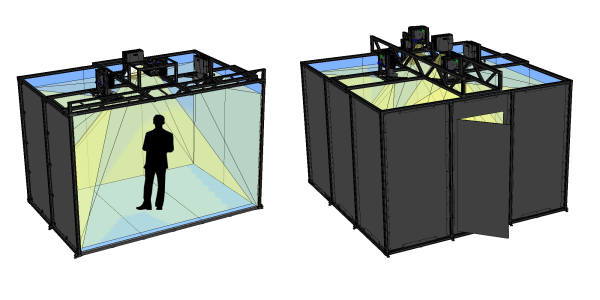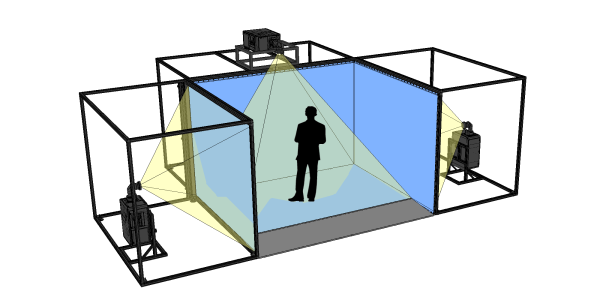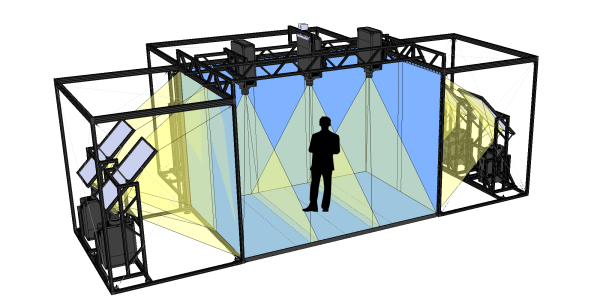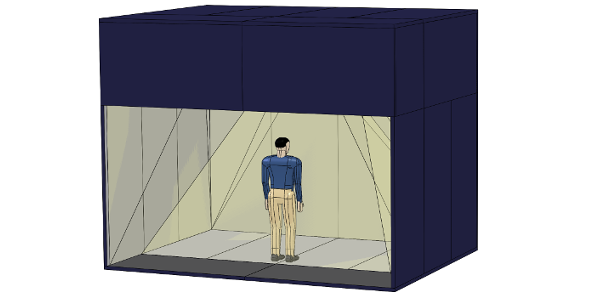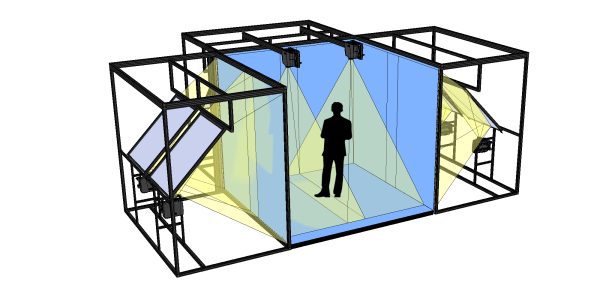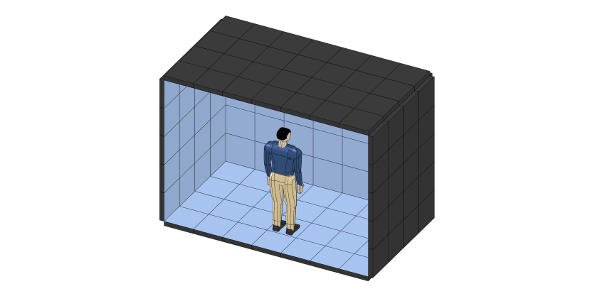CAVE Automatic Virtual Environment
Origins
CAVE is a recursive acronym that stands for CAVE Automatic Virtual Environment. The CAVE is a projection-based VR display that was first developed at the Electronic Visualization Laboratory (EVL) at the University of Illinois at Chicago. It premeried at the SIGGRAPH 1992 conference.
CAVE Key Facts
– 1992: First developed at EVL at University of Illinois
– 1994: Second CAVE at NCSA at University of Illinois
– 2000: Members of Vis Group at NCSA founded Visbox, Inc.
Benefits
The CAVE was developed to overcome many of the limitations of head-mounted displays (HMDs), especially for scientific and engineering applications. The CAVE makes use of large, fixed screens more distant from the viewer. This minimizes the encumbrances carried or worn by users and allows multiple people to share the VR experience. The result is a room-sized immersive 3D visualization system that allows users to collaboratively examine and manipulate complex 3D models with natural interaction and human 1-to-1 scale. Read more about CAVE vs HMD
Applications
The second CAVE was built at the National Center for Supercomputing Applications (NCSA) in 1994. The NCSA CAVE was a testbed for applying this new technology to scientific and engineering applications. The Visualization and Virtual Environments group at NCSA developed custom CAVE tools to help researchers better visualize their data. Read more about CAVE Applications
Visbox, Inc.
Members of that Vis Group at NCSA founded Visbox in 2000 to provide CAVE systems that are more affordable and easier to use. The original CAVE made use of expensive Silicon Graphics (SGI) computers and analog CRT projectors that were difficult to maintain. Visbox’s VisCube CAVE systems feature the newest in digital projection and PC workstation graphics hardware.
VisCube CAVE Solutions
The VisCube™ is an affordable high performance CAVE immersive virtual reality system. The standard configuration features three large rear-projection walls and a front projected floor. The VisCube can be configured as a turn-key immersive virtual reality system, complete with a tracking system and graphics workstation. The VR software environment is based on industry standards. The system is pre-configured for use with common VR software such as MiddleVR (Unity), FreeVR, and vrJuggler. Read more about CAVE Applications.
Custom Solutions
In addition to the standard VisCube models, we are available for custom hardware development for customers with special needs. See the Services page for more information.
VisCube M4, M5
Low cost CAVE VR system
Ultra compact, 10′-11′ tall
4-5 screens, 12′ front wall
1920×1200 projectors
3D active stereo
VisCube C4-4KU
High resolution CAVE
Requires 10.5′ ceiling height
3 walls+floor, 12′ front wall
3840×2400 projectors
3D active stereo
VisCube C4-T3X
Extreme resolution CAVE
Compact, 12′ tall
3 walls+floor, 13′ wide front wall
6000×4096 front/floor
4096×4096 sides
3D active stereo
VisCube M4-6K
High resolution CAVE VR system
Ultra compact, 12′ tall
3 walls + floor, 14′ front wall
6144×3240 projectors
3D active stereo
VisCube C4-T2X
Tall and high resolution CAVE
Compact, 11′ tall
3 walls+floor, 10′ x 10′ walls
4096×4096 per surface
3D active stereo
VisCube LED
Extreme brightness CAVE
DirectView LED panels
High pixel density
Seamless, scalable, rugged
Many configurations possible
3D active stereo

